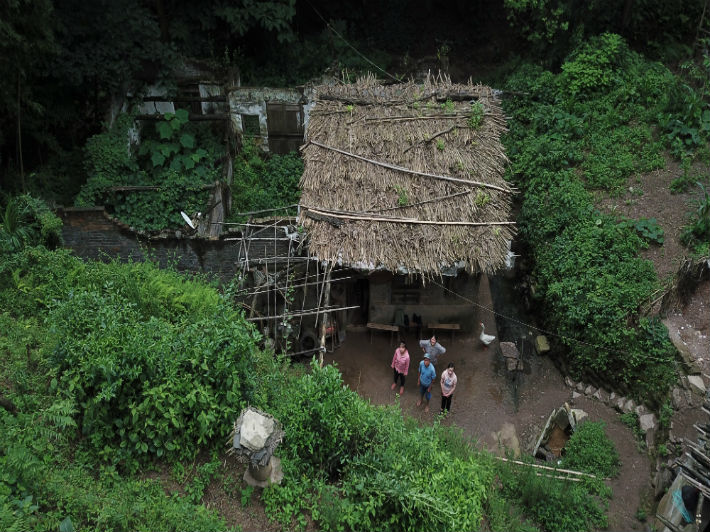Targeted Poverty Alleviation in Bijie: For the Children Left Behind

On December 8, 2018, in a residential building used for relocation settlements in Weining County, Bijie City, Guizhou Province, 11-year-old An Lan played with her 3-year-old sister in her bedroom. After the Chinese Lunar New Year in 2019, An Lan headed to an elementary school designated for relocated families. Her parents, who used to work in factories in a bigger city, will soon return to Weining. Using their skills learned at factories, they are confident that they will be very employable in their hometown.
An Lan used to live in Lunhe Village, Zhejue Township in Weining while her parents worked in Zhejiang Province with her younger sister in tow. An Lan lived with her grandma in a rickety shack. A plank covered with a quilt served as her bed. It took her more than an hour to walk to the elementary school serving the village.

June 25, 2018: Before relocation, Tang Guantian lives in a dilapidated old house made of earth and wood with her sister and parents in Wushimu Village, Haizijie Township, Qixingguan District of Bijie.
Major changes took place in 2018. Last year, based on the different situations of the 370-plus households in the village, the local government implemented targeted poverty alleviation measures. A total of 120 households were relocated, 26 in the county seat and the other 94 to a new village near their previous residence. For poverty-stricken households served by satisfactory public transit systems and located in areas without high occurrence of geological hazards, a subsidy of around US$2,960 was given to each person for home renovation. In just one year, resettlement of all households covered in the targeted poverty alleviation program was completed.
Similar changes also took place in other areas of Bijie. In Wushimu Village, Haizijie Township, Qixingguan District of Bijie, 10-year-old Li Jiayu lives with her grandma, father, younger brother and sister. In June 2018, her family moved into a new 100-squre-meter apartment. Li’s parents divorced long ago, and her father used to be a migrant worker in Zhejiang Province. For quite some time, Li and her younger brother and sister lived with their grandmother in her 70s. Every day, the girl spent around four hours traveling to and from school.

10-year-old Li Jiayu, her younger brother and sister in their new 100-square-meter apartment. In 2018, nearly 21,000 relocated people moved into new houses alongside Li’s family.
She also welcomed dramatic life changes in 2018. Thanks to various industries developed by the local government to attract locals employed in other places to return home, Li’s father returned in 2018 and soon landed a job. Li and her siblings enrolled in a nearby elementary school. A total of 4,489 households composed of 20,521 people moved into new apartments alongside Li’s family in 2018.
Poverty has been a long-standing problem for Bijie. Administering seven counties and three districts, Bijie is one of the poorest regions in the Wumeng Mountains. The mountainous area of Wumeng, stretching across the three provinces of Sichuan, Yunnan, and Guizhou, is one of the largest and hardest-hit among the 14 contiguous areas of extreme poverty in China. Of Bijie’s total population of 9.28 million, nearly one million people still live in poverty.
Since many locals moved to bigger cities as migrant workers, about 260,000 kids were left behind in Bijie’s rural areas. Thus, improving these children’s living and educational conditions has become a key part of the local government’s targeted poverty alleviation efforts in recent years. Villages in remote areas and plagued by harsh environmental conditions were relocated. And more efforts have been made to establish and promote supportive industries for poverty reduction to attract more migrant workers to return home and live with their kids. Only by their parents coming back will left-behind children truly live at home.